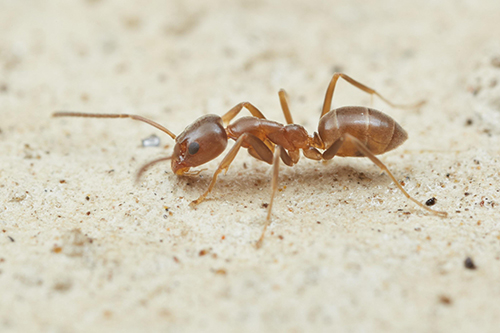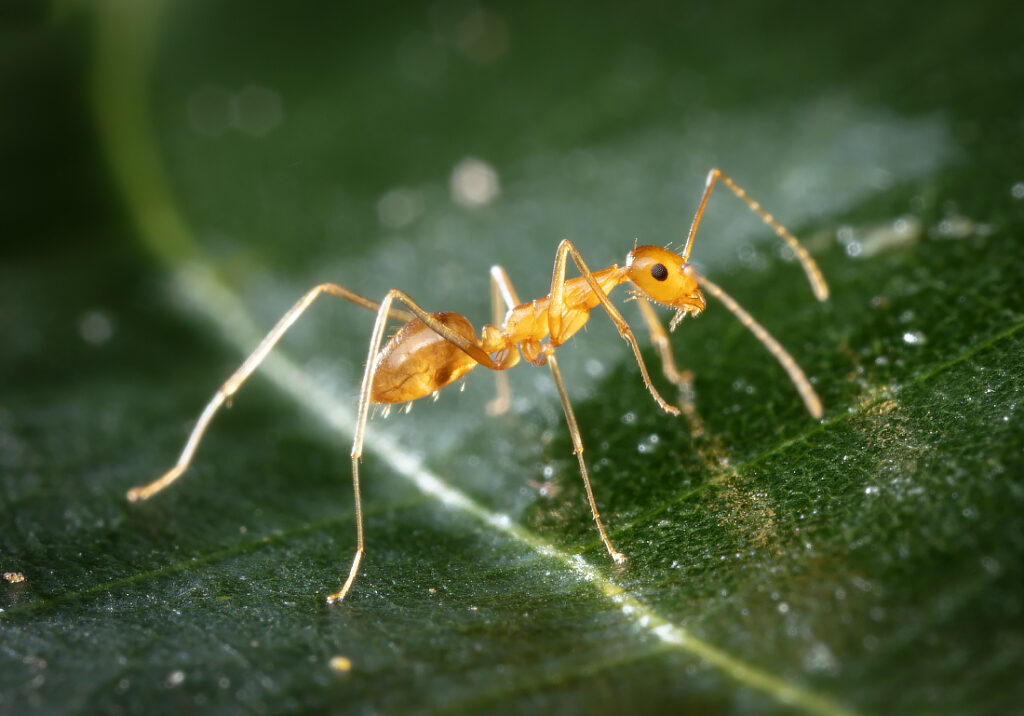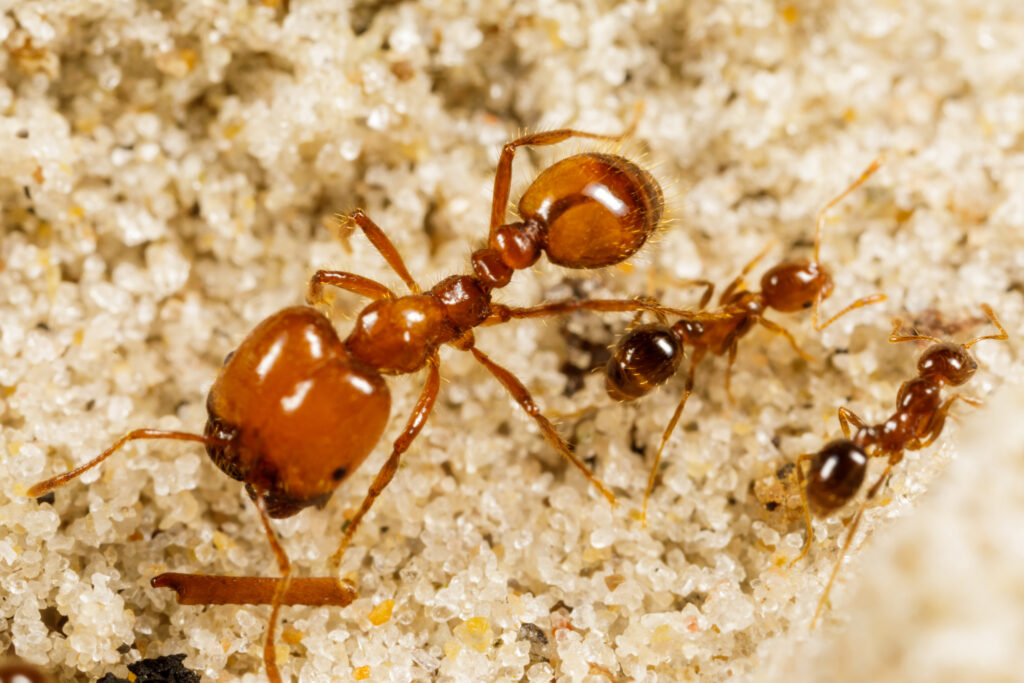The order Hymenoptera includes sawflies, wasps, ants, and bees. They’re the third largest insect order, and as pollinators, one of the most beneficial and important to humans.
Ants
The Hawaiian islands are one of the most isolated islands in the world, and before the last 200 years there were no native ants. Now, around 57 ant species have become established on the islands, and at least four ant species have had particularly profound effects on native insects, spiders, and the larger ecological communities. Many of those ant species are among the World’s 100 Worst Invasive Species (IUCN Invasive Species Specialist Group). If you ever see invasive ants in Hawaii, you can report them to 643pest.org!
Argentine Ant (Linepithema humile)
Native to South America, but now found worldwide and established in Mediterranean climates (including becoming widely distributed in California), these ants form huge supercolonies and cause large scale damage to crops and native plants.
Yellow crazy ant (Anoplolepis gracilipes)
Named for their erratic movements, these ants are native to Africa and Asia. One of the larger invasive ant species, they are also known as “long-legged ants.” They are known to be attracted to sweet foods and can also feed on small animals and even seabird chicks.
Tropical fire ant (Solenopsis geminata)
Native to South/Central America and now established throughout Hawaii, these ants deliver a painful sting and can cause allergic reactions for many people. They are attracted to sweet foods and can also feed on small insects and other arthropods.
Little fire ant (Wasmannia auropunctata)
First found in Hawaii in 1999, they are named for their painful sting relative to their little size, and they can even cause blindness in pets with their aggressive stings. They promote plant pests such as aphids, white flies and scale insects, which secrete plant sap that the ants eat. In turn, the ants protect these insects from natural predators and parasites.




